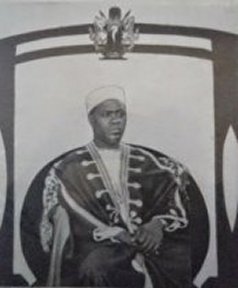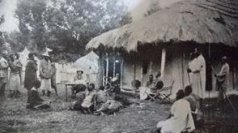|
 By the 1930 missionaries were abundant in the area having first been visited by the Catholic missionary, Yowana Kitagana in 1911, spreading Christianity. However there were ongoing superstitions that some of those who were converted to Christianity were later possessed by the spirit of Nyabingi, fermenting a low level but none-the-less very real simmering of discontent with the British. In 1932 Kabale became a township with an administration invested in a township authority overseen by the Protectorate Governor. By the 1930 missionaries were abundant in the area having first been visited by the Catholic missionary, Yowana Kitagana in 1911, spreading Christianity. However there were ongoing superstitions that some of those who were converted to Christianity were later possessed by the spirit of Nyabingi, fermenting a low level but none-the-less very real simmering of discontent with the British. In 1932 Kabale became a township with an administration invested in a township authority overseen by the Protectorate Governor.
 In 1958 the Town Authority became a town board and then a town council with ten councillors in 1962, the year of Ugandan independence. Within two years, the "Rutakirwa Engabo ya Kigezi" (the shield of Kigezi ~ left) was elected as the constitutional head of the District however this position was later vacated under President Obote's constitutional changes of 1966 due to Article 118(1) of the new law, which stated: “The institution of King or Ruler of a Kingdom or Constitutional Head of a District, by whatever name called, existing immediately before the commencement of this Constitution under the law then in force, is hereby abolished.” In 1985 Kabale was granted the status of a municipal council and later district in addition to its town status forming one District of the Kigezi sub-region of Western Uganda a which also comprises Kanungu, Kisoro and Rukungiri Districts. In 1958 the Town Authority became a town board and then a town council with ten councillors in 1962, the year of Ugandan independence. Within two years, the "Rutakirwa Engabo ya Kigezi" (the shield of Kigezi ~ left) was elected as the constitutional head of the District however this position was later vacated under President Obote's constitutional changes of 1966 due to Article 118(1) of the new law, which stated: “The institution of King or Ruler of a Kingdom or Constitutional Head of a District, by whatever name called, existing immediately before the commencement of this Constitution under the law then in force, is hereby abolished.” In 1985 Kabale was granted the status of a municipal council and later district in addition to its town status forming one District of the Kigezi sub-region of Western Uganda a which also comprises Kanungu, Kisoro and Rukungiri Districts.
Today the town has a population of some 46,000 people and is seen as a gateway to tourism in the area as well as a staging post to Rwanda, DRC and beyond. |



